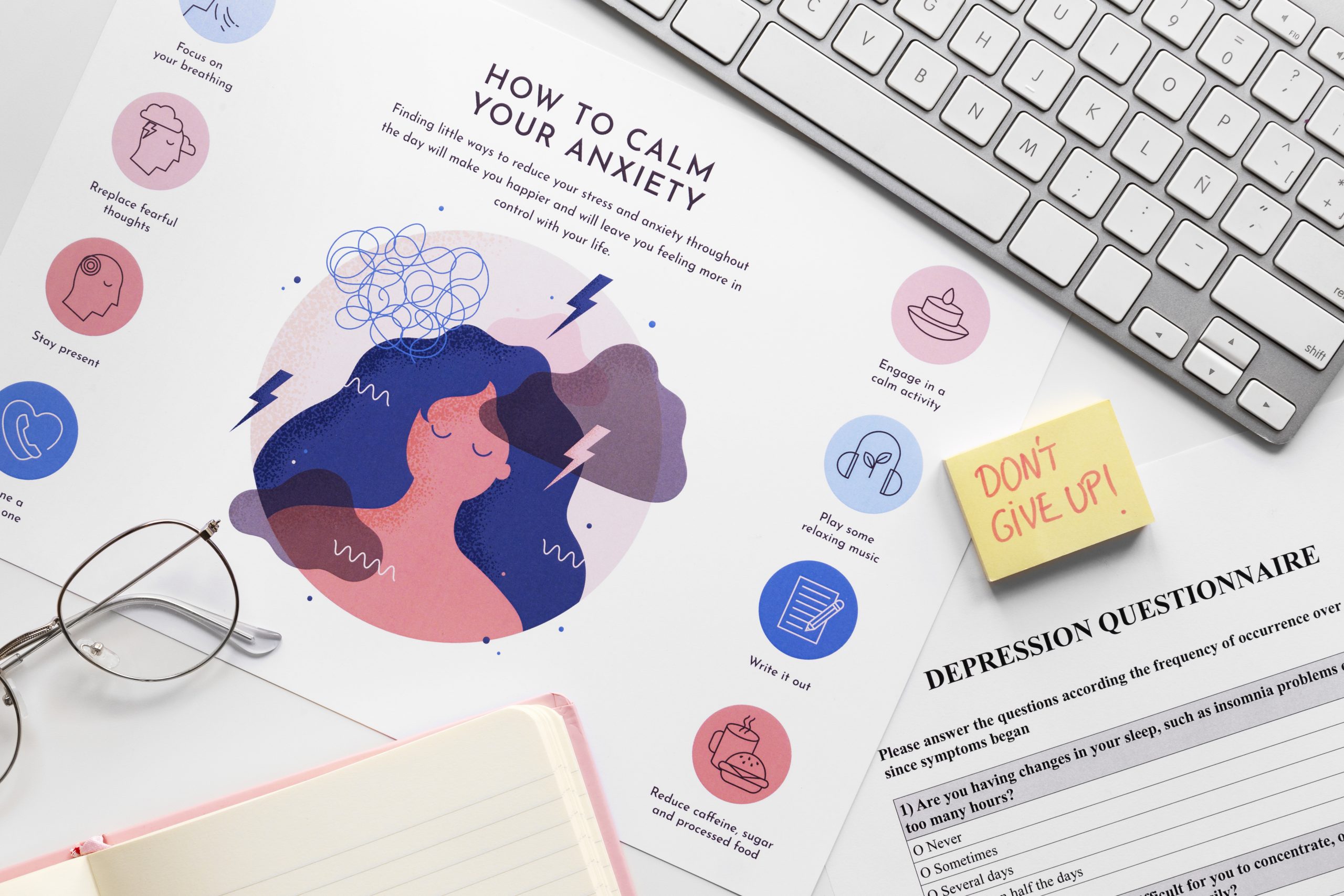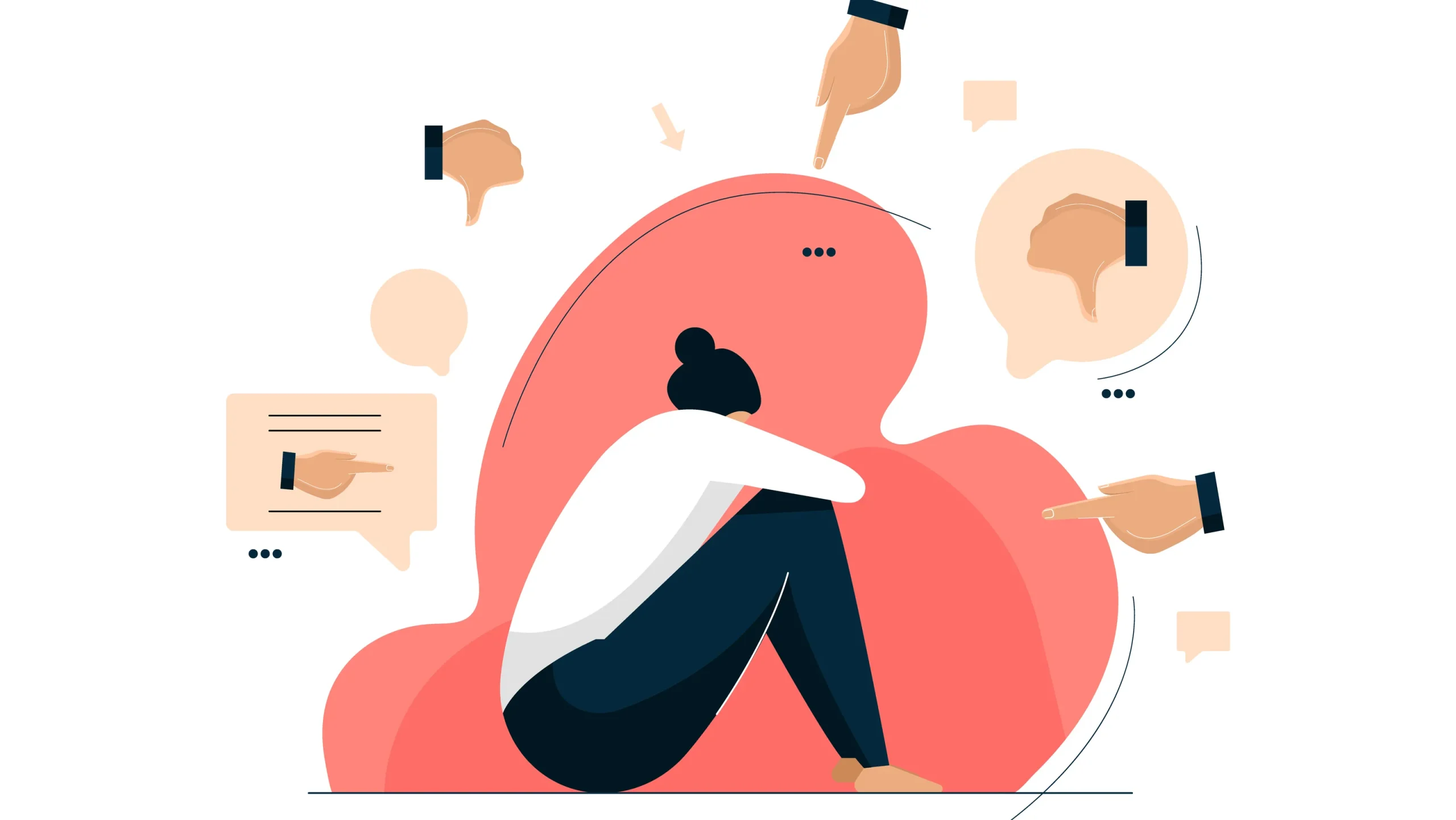Anxiety can be a debilitating condition, impacting every aspect of life. Whether it’s social anxiety, generalized anxiety disorder, or panic attacks, the effects can be profound and far-reaching. Fortunately, Cognitive Behavioral Therapy (CBT) offers a robust toolkit for managing and overcoming anxiety.
But first, What is Anxiety?
Before diving into the specifics of CBT, it’s essential to understand what anxiety is and how it manifests. Anxiety is a natural response to stress, characterized by feelings of worry, nervousness, or fear. While everyone experiences anxiety from time to time, chronic anxiety can interfere with daily activities and overall well-being. Symptoms of anxiety can include:
- Persistent worry or fear
- Restlessness or feeling on edge
- Irritability
- Muscle tension
- Sleep disturbances
- Difficulty concentrating
- Panic attacks
What is Cognitive Behavioral Therapy (CBT)?
Cognitive Behavioral Therapy (CBT) is a type of psychotherapy that helps individuals identify and change negative thought patterns and behaviors. CBT is based on the principle that our thoughts, feelings, and behaviors are interconnected. By altering negative thought patterns, we can influence our emotions and actions positively.
CBT is particularly effective in treating anxiety disorders. It equips individuals with practical skills to manage their anxiety, making it an invaluable part of any anxiety toolkit.
Building Your Anxiety Toolkit with CBT
Here are some CBT techniques that can help you build an effective anxiety toolkit:
1. Cognitive Restructuring
Cognitive restructuring, also known as cognitive reframing, involves identifying and challenging negative thought patterns. This technique helps you replace irrational or harmful thoughts with more balanced and realistic ones.
Steps to Practice Cognitive Restructuring:
- Identify Negative Thoughts: Pay attention to your thoughts, especially those that trigger anxiety. Write them down.
- Challenge the Thoughts: Ask yourself if these thoughts are based on facts or assumptions. Are they overly negative or irrational?
- Replace the Thoughts: Substitute negative thoughts with positive or neutral ones. For example, instead of thinking, “I’ll never get through this,” try thinking, “I can handle this step by step.”
2. Exposure Therapy
Exposure therapy is a CBT technique that involves gradually exposing yourself to the situations or objects that trigger your anxiety. This exposure helps reduce the fear and avoidance associated with anxiety.
Steps to Practice Exposure Therapy:
- Identify Triggers: List the situations or objects that cause anxiety.
- Create a Hierarchy: Rank these triggers from least to most anxiety-provoking.
- Gradual Exposure: Start with the least anxiety-provoking trigger and gradually work your way up. Spend time in each situation until your anxiety decreases.
3. Relaxation Techniques
Relaxation techniques can help manage the physical symptoms of anxiety, such as muscle tension and rapid breathing. These techniques include deep breathing, progressive muscle relaxation, and mindfulness meditation.
Steps to Practice Relaxation Techniques:
- Deep Breathing: Sit comfortably, inhale deeply through your nose, hold for a few seconds, and exhale slowly through your mouth. Repeat several times.
- Progressive Muscle Relaxation: Tense and then relax each muscle group in your body, starting from your toes and working your way up to your head.
- Mindfulness Meditation: Focus on your breath and observe your thoughts without judgment. Allow yourself to be present in the moment.
4. Behavioral Activation
Behavioral activation involves engaging in activities that you enjoy or that give you a sense of accomplishment. This technique can help combat the withdrawal and inactivity that often accompany anxiety.
Steps to Practice Behavioral Activation:
- List Enjoyable Activities: Write down activities that make you feel good or that you used to enjoy.
- Set Small Goals: Start with small, manageable goals. For example, if you enjoy walking, set a goal to walk for 10 minutes each day.
- Track Your Progress: Keep a journal to track your activities and how they make you feel. This can help you stay motivated and recognize the positive impact of these activities on your anxiety.
5. Problem-Solving Skills
Developing effective problem-solving skills can help you manage stress and anxiety more effectively. This technique involves identifying problems, generating solutions, and implementing them in a structured way.
Steps to Improve Problem-Solving Skills:
- Identify the Problem: Clearly define the problem you’re facing.
- Brainstorm Solutions: Generate a list of potential solutions without judging their feasibility.
- Evaluate the Solutions: Assess the pros and cons of each solution and choose the best one.
- Implement the Solution: Put the chosen solution into action and monitor its effectiveness.
- Reflect and Adjust: Reflect on the outcome and make adjustments as needed.
6. Thought Records
Thought records are a valuable tool in CBT that help you track and analyze your thoughts and emotions. This technique can provide insights into your thought patterns and help you develop healthier ways of thinking.
Steps to Use Thought Records:
- Identify the Situation: Note the situation that triggered a strong emotional response.
- Record Your Thoughts and Emotions: Write down the thoughts and emotions you experienced in that situation.
- Challenge the Thoughts: Evaluate whether your thoughts were realistic or overly negative. Consider alternative, more balanced perspectives.
- Reflect on the Outcome: Reflect on how challenging and reframing your thoughts affected your emotions and behavior.
Real-Life Application: Case Study
Let’s consider a real-life application of CBT in an anxiety toolkit. Sarah, a 28-year-old graphic designer, frequently experienced social anxiety, particularly in work meetings. Her negative thoughts included, “Everyone will think I’m incompetent” and “I’ll embarrass myself.”
Step-by-Step CBT Application:
- Cognitive Restructuring:
- Sarah identified her negative thought: “Everyone will think I’m incompetent.”
- She challenged this thought by asking, “Is there evidence to support this?” and “What are some examples of positive feedback I’ve received?”
- She replaced the thought with, “I am prepared and capable, and my colleagues value my input.”
- Exposure Therapy:
- Sarah listed her anxiety triggers, ranking them from least to most anxiety-provoking (e.g., speaking up in small meetings vs. large presentations).
- She started with speaking up in small meetings, gradually working her way up to larger presentations, reducing her anxiety over time.
- Relaxation Techniques:
- Sarah practiced deep breathing exercises before and during meetings to manage physical symptoms of anxiety.
- Behavioral Activation:
- Sarah identified activities she enjoyed, such as painting and jogging, and made time for these activities regularly to improve her overall mood and reduce anxiety.
- Problem-Solving Skills:
- When faced with a stressful project deadline, Sarah broke the project down into smaller tasks, prioritized them, and tackled each one step by step, reducing her anxiety about meeting the deadline.
- Thought Records:
- Sarah kept a thought record of her anxious thoughts and responses during meetings, helping her identify patterns and practice more balanced thinking.
Building an anxiety toolkit using CBT techniques can be transformative. By incorporating cognitive restructuring, exposure therapy, relaxation techniques, behavioral activation, problem-solving skills, and thought records into your daily routine, you can effectively manage and overcome anxiety. CBT empowers you to take control of your thoughts and emotions, leading to a more balanced and fulfilling life. If you find that you need additional support, consider seeking guidance from a psychologist or therapist who can provide personalized strategies and assistance





